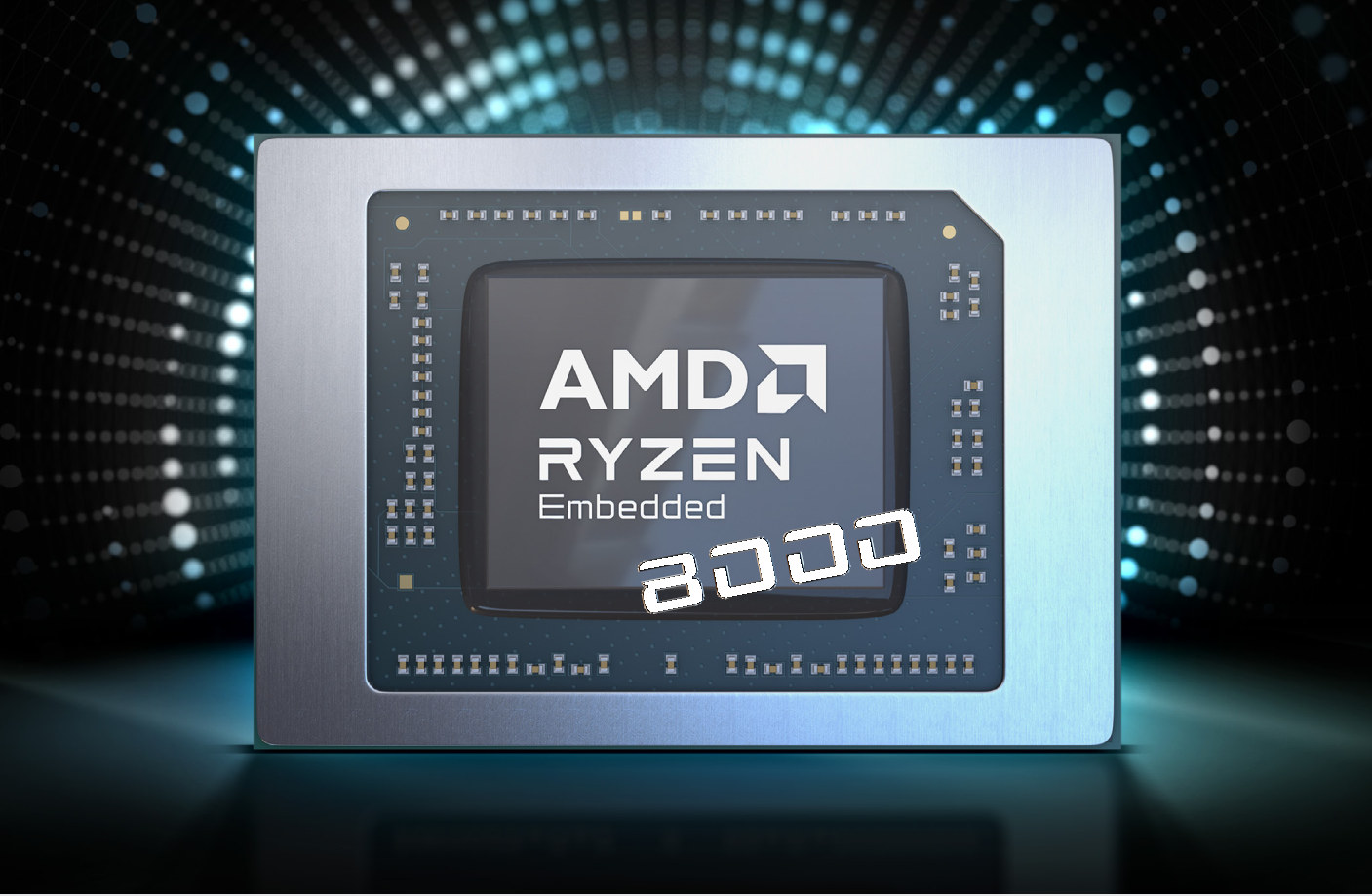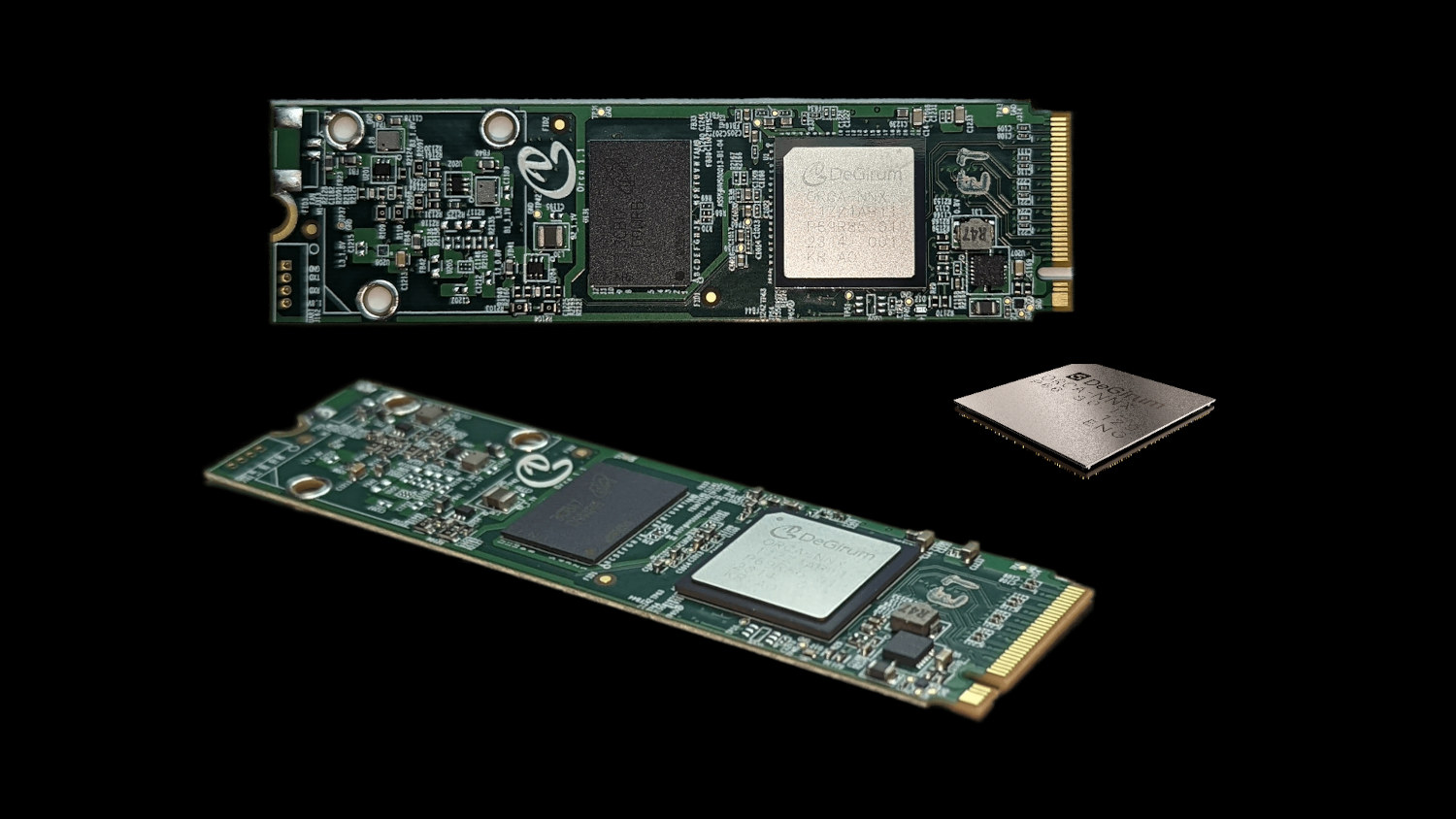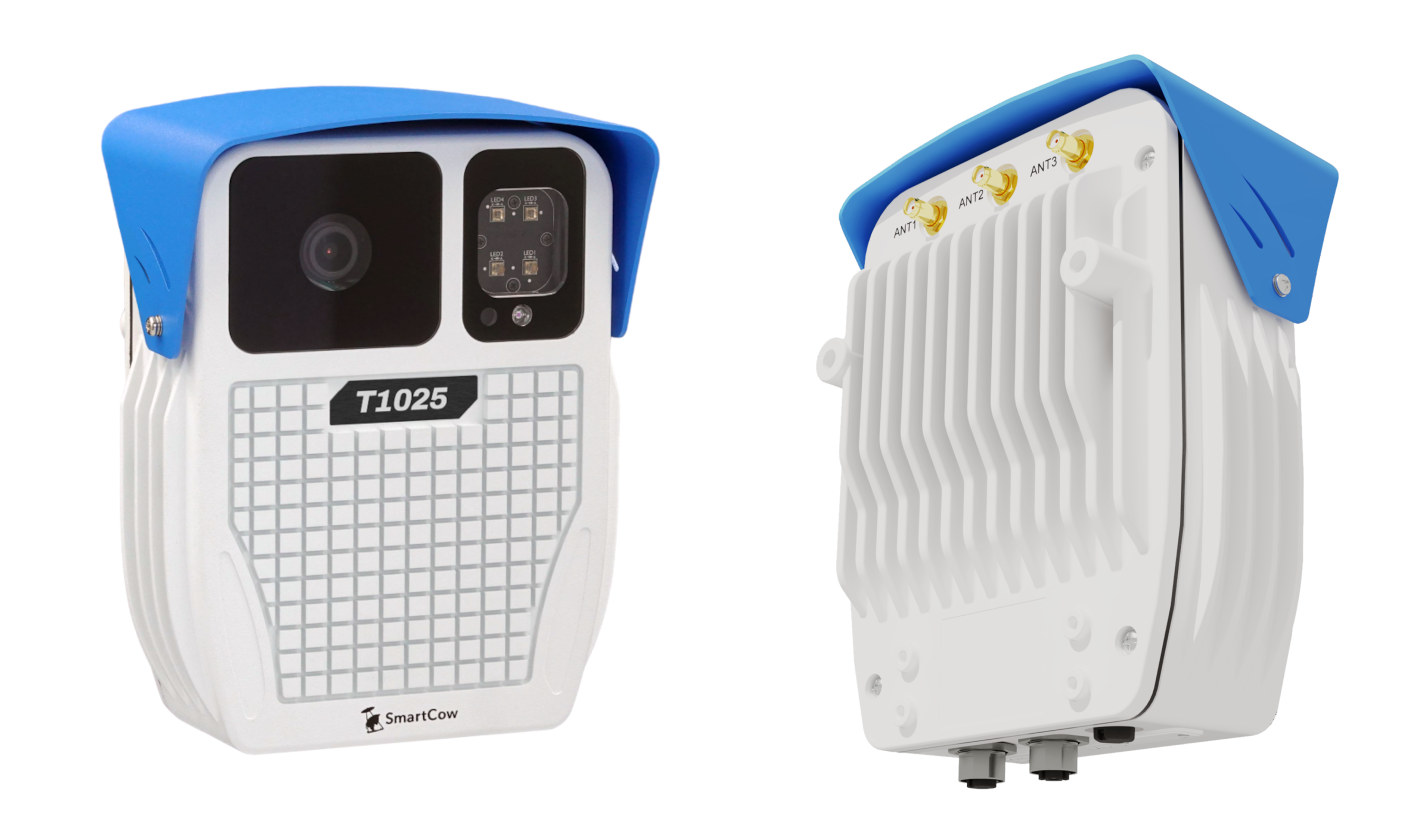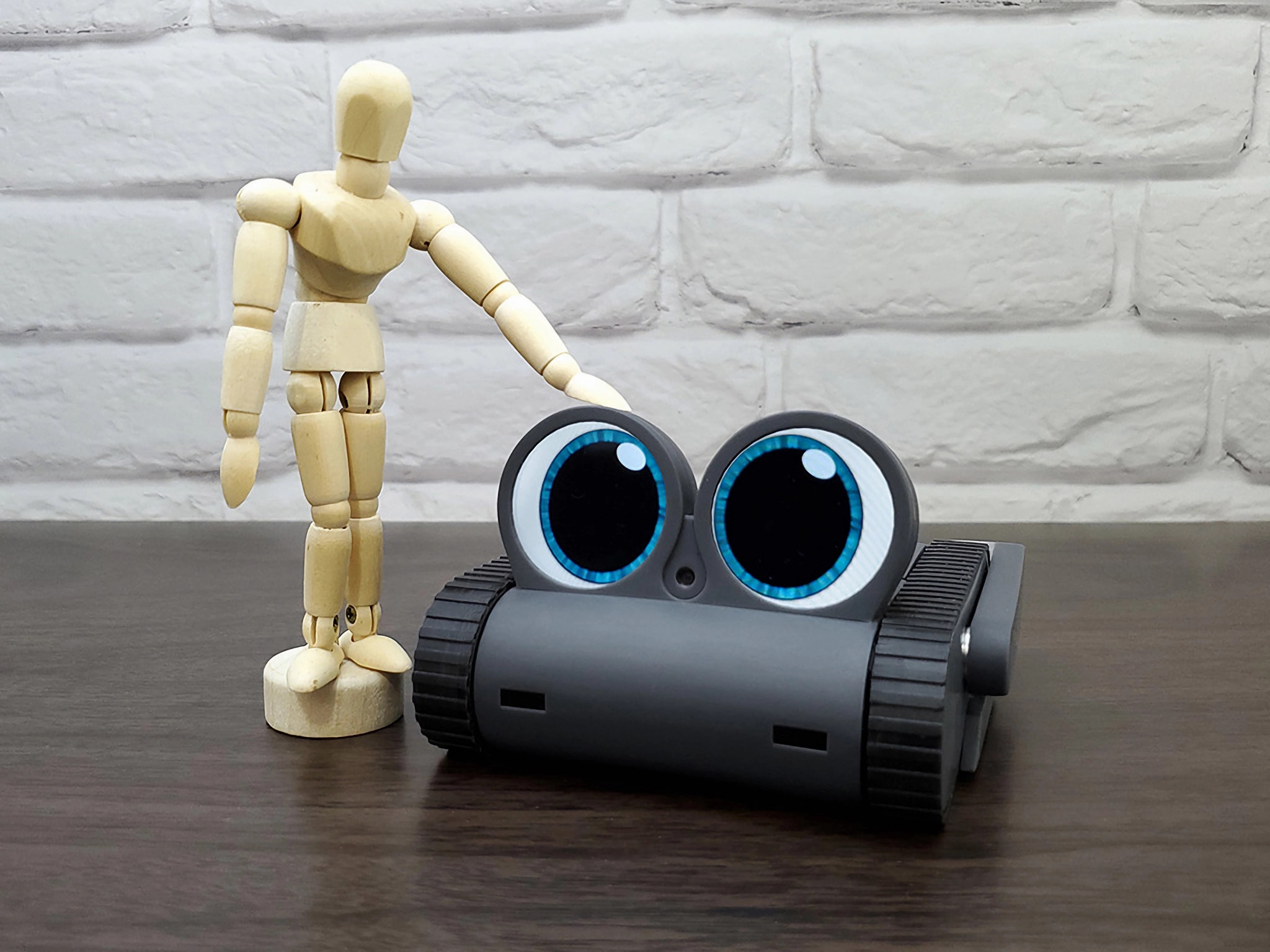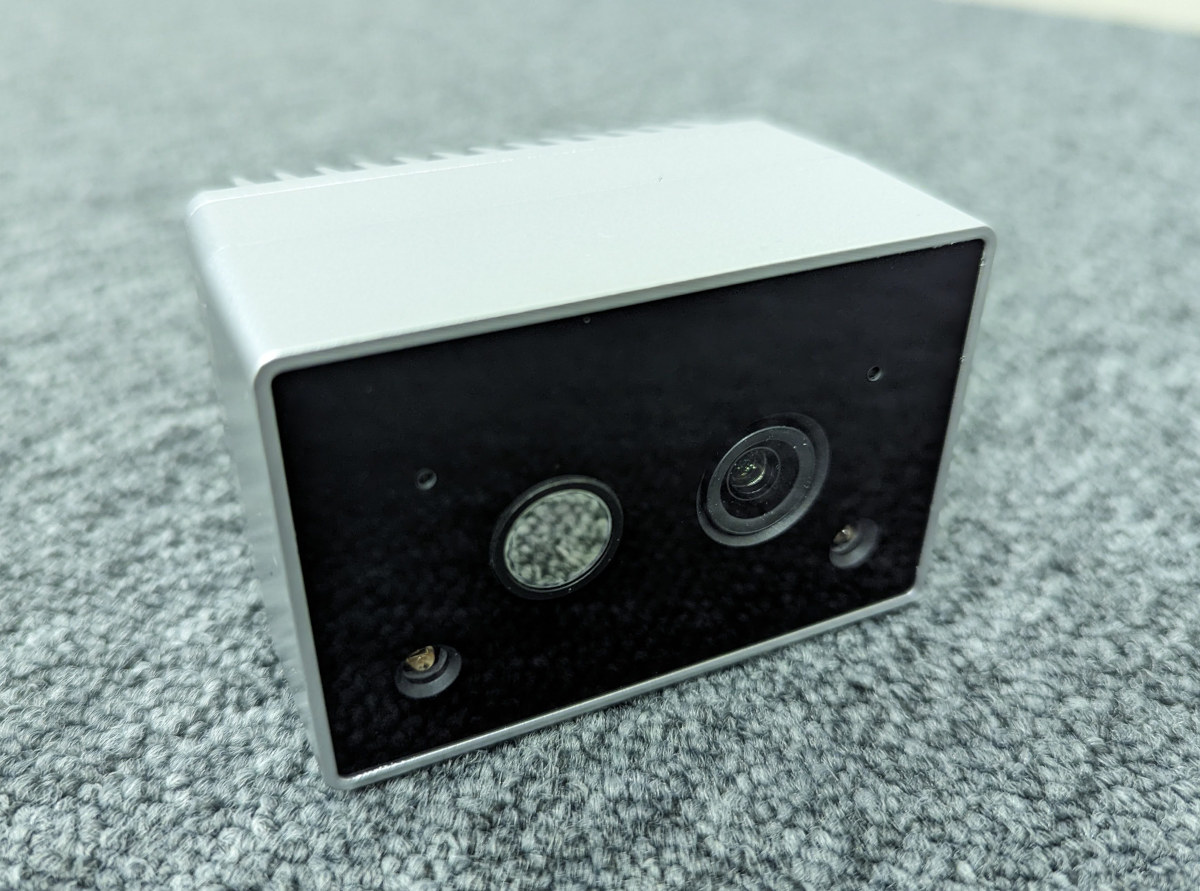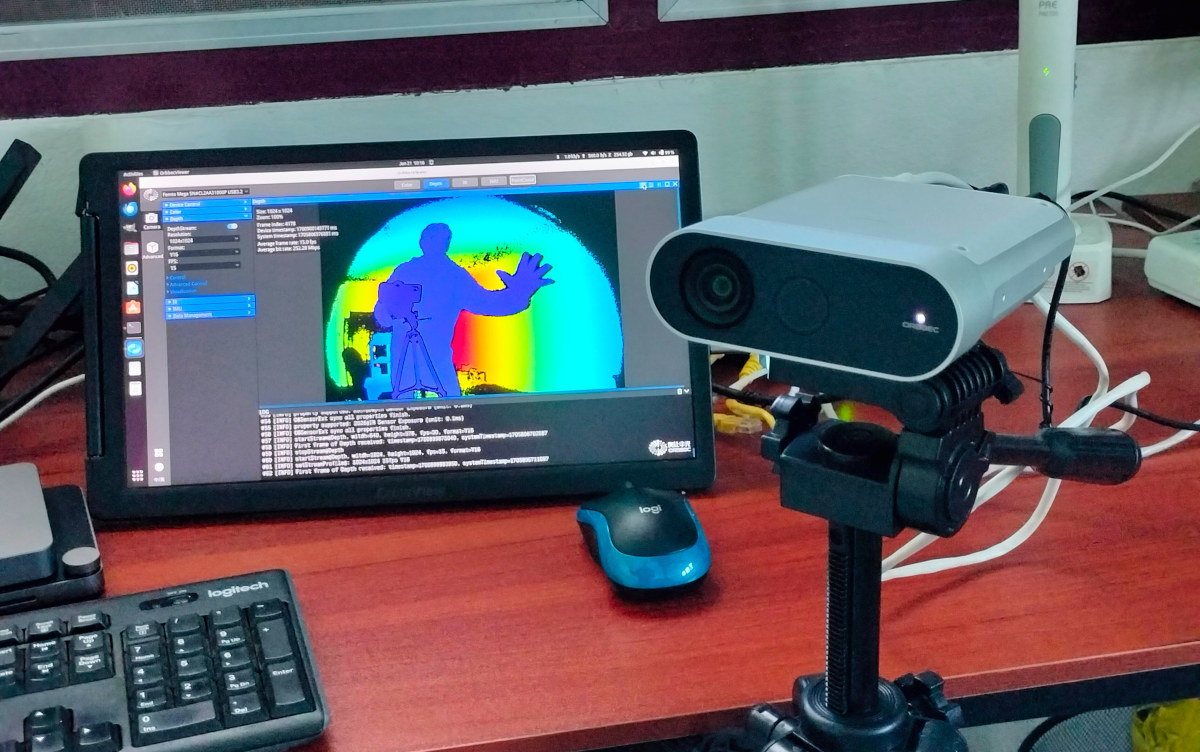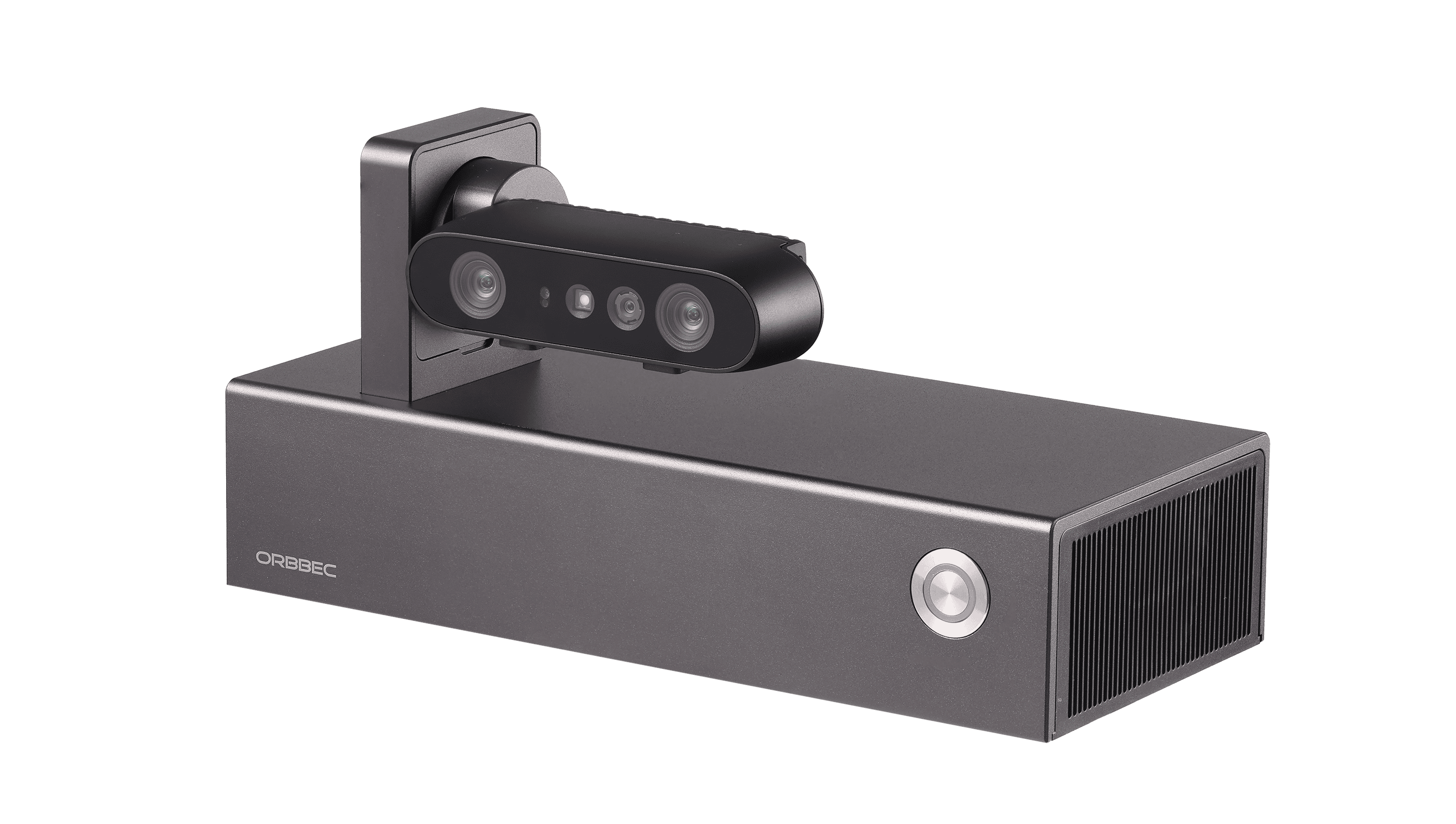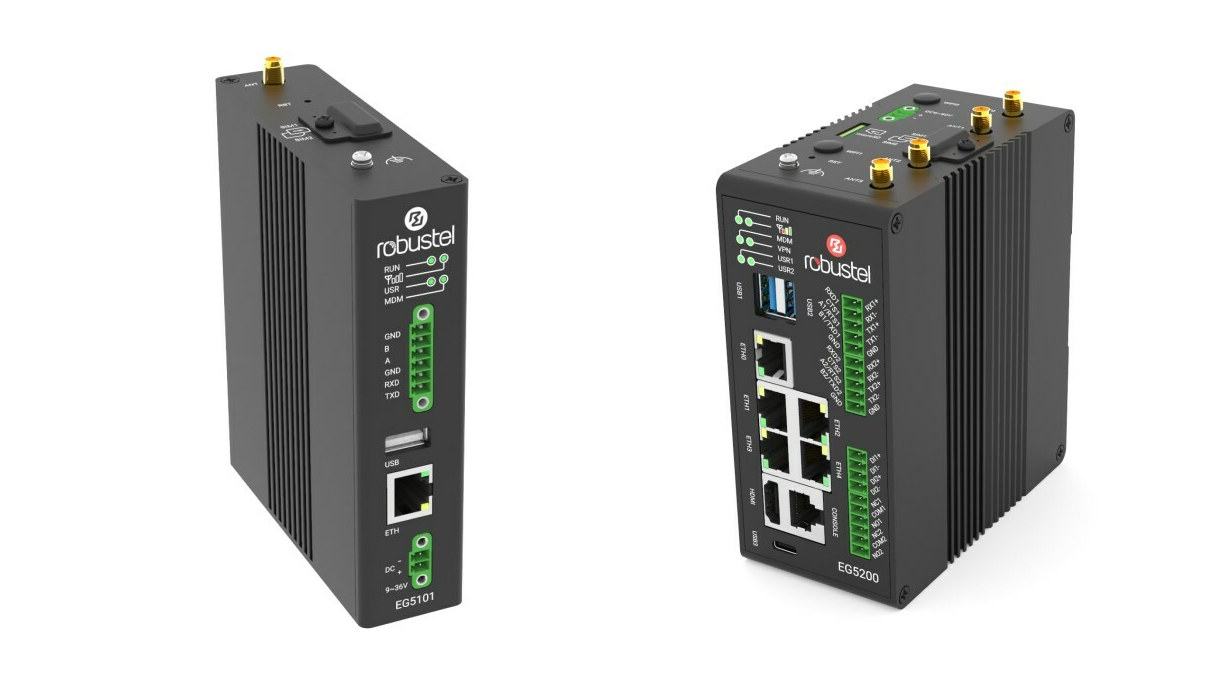AMD has recently “announced” the Ryzen Embedded 8000 Series processors in a community post with the latest AMD embedded devices combining a 16 TOPS NPU based on the AMD XDNA architecture with CPU and GPU elements for a total of 39 TOPS designed for industrial artificial intelligence. The Ryzen Embedded 8000 CPUs will be found in machine vision, robotics, and industrial automation applications to enhance the quality control and inspection processes, enable real-time, route-planning decisions on-device for minimal latency, and predictive maintenance, and autonomous control of industrial processes. AMD Ryzen Embedded 8000 key features and shared specifications: CPU – Up to 8 “Zen 4” cores, 16 threads Cache L1 Instruction Cache – 32 KB, L1 Data Cache = 32 KB (per core) L2 Cache – Up to 8 MB (total) L3 Cache- Up to 16 MB unified Graphics – RDNA 3 graphics with up to 6 WGPs (Work Group processors) […]
DeGirum ORCA M.2 and USB Edge AI accelerators support Tensorflow Lite and ONNX model formats
I’ve just come across an Atom-based Edge AI server offered with a range of AI accelerator modules namely the Hailo-8, Blaize P1600, Degirum ORCA, and MemryX MX3. I had never heard about the last two, and we may cover the MemryX module a little later, but today, I’ll have a closer at the Degirum ORCA chip and M.2 PCIe module. The DeGirum ORCA is offered as an ASIC, an M.2 2242 or 2280 PCIe module, or (soon) a USB module and supports TensorFlow Lite and ONNX model formats and INT8 and Float32 ML precision. They were announced in September 2023, and have already been tested in a range of mini PCs and embedded box PCs from Intel (NUC), AAEON, GIGABYTE, BESSTAR, and Seeed Studio (reComputer). DeGirum ORCA specifications: Supported ML Model Formats – ONNX, TFLite Supported ML Model Precision – Float32, Int8 DRAM Interface – Optional 1GB, 2GB, or 4GB […]
Smartcam T1205 – An IP65-rated AI camera with NVIDIA Jetson Orin Nano 40 TOPS system-on-module
SmartCow’s SmartCam T1025 is a powerful AI camera based on the NVIDIA Jetson Orin Nano 8GB system-on-module with 40 TOPS of AI performance. The camera features M12 connectors for gigabit Ethernet, power, and serial interface, and has been certified with an IP65 ingress protection rating for outdoor operation. The camera also comes with 256GB NVMe SSD for the OS (Jetpack 6.0) and data storage and supports 4G LTE and GPS connectivity through an M.2 module. The company also introduced the SmartCam T1023 model compatible with NVIDIA Jetson Nano and Jetson TX2 NX for applications that do not require as much processing power and/or memory as provided by the Jetson Orin Nano AI camera. SmartCam T1025 specifications: System-on-module – NVIDIA Jetson Orin Nano 8GB CPU – 6-core Arm Cortex-A78AE v8.2 64-bit CPU @ 1.5 GHz with 1.5 MB L2 + 4 MB L3 GPU – 1024-core NVIDIA Ampere GPU @ 625 […]
Doly – A cute little autonomous AI-powered robot based on Raspberry Pi CM4 module (Crowdfunding)
Limitbit Doly is a cute little autonomous robot with two continuous tracks, two small arms controlled by servos, two round color displays acting as the eyes, and various sensors, all controlled by a Raspberry Pi CM4 system-on-module. The robot can be used for STEM (Science, Technology, Engineering, and Mathematics) education or as a developer platform. AI workloads can also run on the Raspberry Pi CM4 module taking sensors, camera, and microphone inputs, with the robot interacting with the user through the built-in stereo speaker and two eyes. In practice, that means Doly supports features such as face recognition and smart audio with the robot capable of recognizing its owner and responding to voice commands. Doly specifications: System-on-Module – Raspberry Pi CM4 Lite model CM4101000 (1GB RAM, Wireless) by default, but also supports other CM4/CM Lite modules with wireless Storage – MicroSD card slot Display – 2x high-resolution color displays (the […]
Luxonis OAK Thermal – A PoE thermal camera with Myriad X AI accelerator, waterproof M12 and M8 connectors
Luxonis has announced its first thermal camera with the OAK Thermal (OAK-T) based on the company’s OAK-SoM Pro AI module featuring an Intel Movidius Myriad X, and two waterproof ports with an M12 PoE/Ethernet connector and an M8 auxiliary connector. Luxonis has been making AI cameras based on Myriad X AI accelerator and its Depth AI solution at least since 2019, and its module is also found in third-party cameras as we’ve recently found out with the Arducam PiNSIGHT AI camera. But they had never made a thermal model, and following customers’ requests to fuse thermal and RGB data, they’ve now developed the OAK Thermal, or OAK-T for shorts, that is suitable for detecting leaks and fires or more accurately detect humans & animals than traditional vision-only based cameras. OAK Thermal camera specifications: System-on-Module – Luxonis OAK-SoM Pro with AI accelerator – Intel Movidius Myriad X AI vision processing unit […]
Femto Mega 3D depth camera review – OrbbecViewer and Orbbec SDK in Ubuntu 22.04, body tracking in Windows 11
We had a quick look at the Orbbec Femto Mega 3D depth and 4K RGB camera at the end of last year with a look at the hardware and a quick try with the OrbbecViewer program in Ubuntu 22.04. I’ve now had the time to test the OrbbecViewer in more detail, check out the Orbbec SDK in Linux and various samples, and finally test the Femto Mega with a body tracking application using Unity in Windows 11. A closer look at OrbbecViewer program and settings As noted in the first part of the review, the OrbbecViewer program provides color, depth, and IR views for the camera. Let’s go into details for each. The Color mode would be the same as your standard USB color camera. The Femto Mega supports resolution from 1280×720 at 30 fps to 3840×2160 at 25 fps using MJPG, H.264, H.265, or RGB (converted from MJPG). We […]
Persee N1 – A modular camera-computer based on the NVIDIA Jetson Nano
The Persee N1 is a modular camera-computer kit recently launched by 3D camera manufacturer, Orbbec. Not too long ago, we covered their 3D depth and RGB USB-C camera, the Femto Bolt. The Persee N1 was designed for 3D computer vision applications and is built on the Nvidia Jetson platform. It combines the quad-core processor of the Jetson Nano with the imaging capabilities of a stereo-vision camera. The Jetson Nano’s impressive GPU makes it particularly appropriate for edge machine learning and AI projects. The company also offers the Femto Mega, an advanced and more expensive alternative that uses the same Jetson Nano SoM. The Persee N1 camera-computer also features official support for the open-source computer vision library, OpenCV. The camera is suited for indoor and semi-outdoor operation and uses a custom application-specific integrated circuit (ASIC) for enhanced depth processing. It also provides advanced features like multi-camera synchronization and IMU (inertial measurement […]
Robustel introduces EG5101 and EG5200 Debian 11 industrial IoT gateways with 4G LTE cellular connectivity
Robustel introduced the EG5101 and EG5200 industrial IoT gateways running Debian 11 a few weeks ago, both with 4G LTE cellular connectivity, but the NXP i.MX 6ULL-based EG5101 has a more compact design, while the NXP i.MX 8M Plus-powered EG5200 provides more I/Os and resources. Expanding the earlier EG5100, EG5120, and LG5100 models from the company, the two edge computing gateways target Industry 4.0 and smart infrastructure applications and enable real-time analytics at the edge with lower latency than running workloads in the cloud. Robustel EG5101 and EG5200 SoC/Memory/Storage EG5101 NXP i.MX 6ULL Cortex-A7 32-bit processor @ 792 MHz 512MB to 1024MB DDR3 8GB eMMC flash EG5200 NXP i.MX 8M Plus quad-core Cortex-A53 64-bit processor @ 1.6 GHz with 2.3 TOPS NPU 4GB DDR4 32GB eMMC flash, microSD card socket Connectivity EG5101 1x 10/100 Mbps Ethernet port 4G LTE with 1x SMA-K antenna connector, 2x Mini SIM (2FF) EG5200 5x […]


